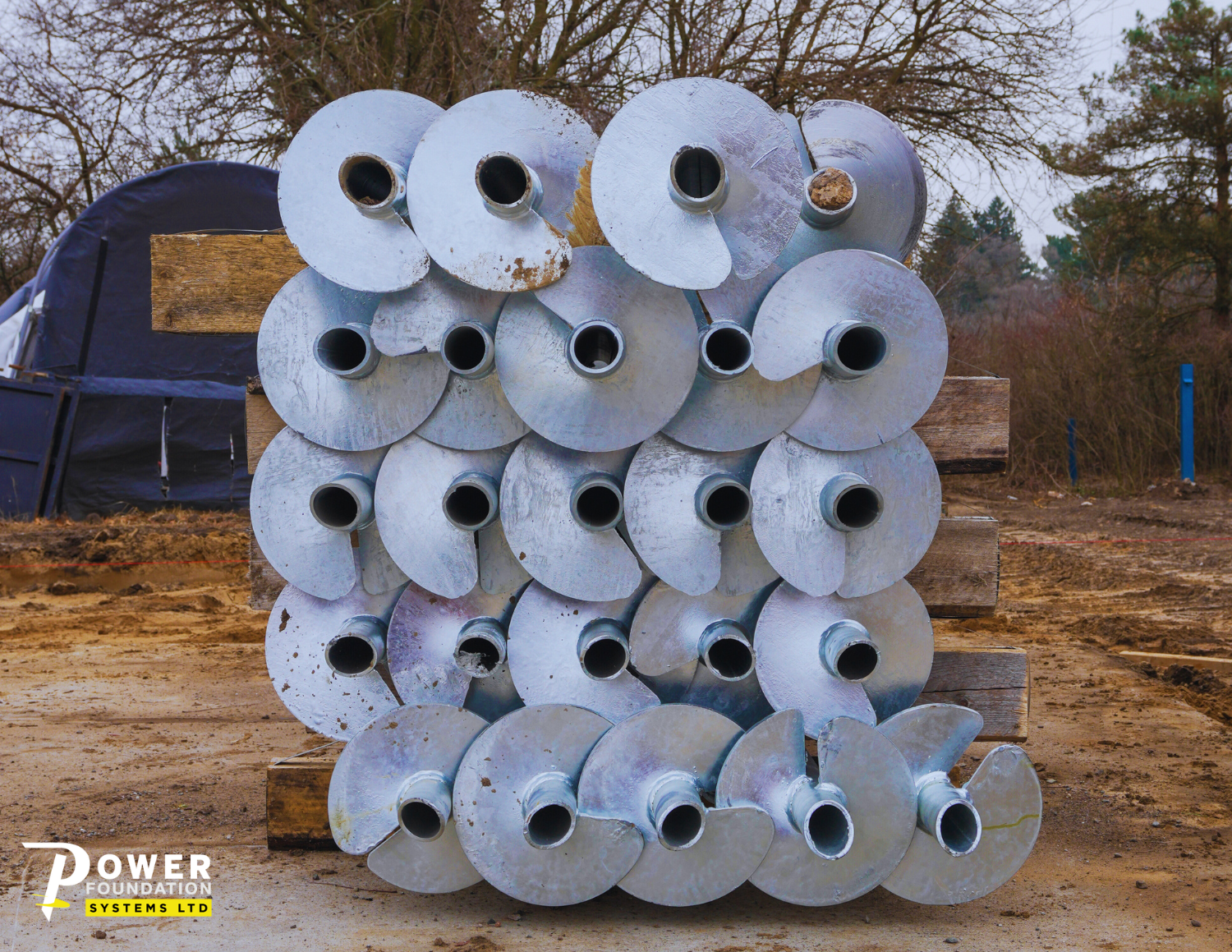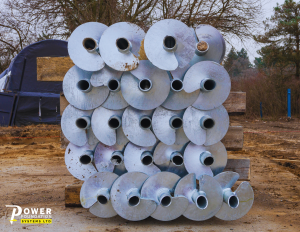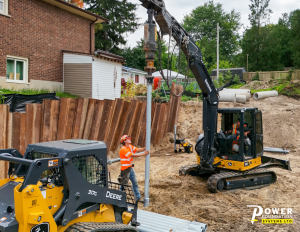When it comes to creating a strong foundation for a new build, we always tend to stick to the traditional methods. We’re definitely on the right path though; they’ve been tried and tested for so many years. However, for people looking for an alternative to concrete foundations, helical piles stand out.
The helical pile foundation was first engineered in the 1830s by Alexander Mitchell to reinforce the foundation of houses (Kim et al., 2018). It was soon utilized specifically for marine structures like lighthouses and boat moorings in the ocean, and anything that needed to be stabilized in mud, sand, and similar bases. Since then, helical piles have been a groundbreaking technology ever since it hit the local market.
Although both methods have their own advantages and disadvantages, it’s essential to dig deeper into their features and benefits to aid you in making an informed decision.
In this article, we’ll explore the pros and cons of helical piles vs concrete foundations, based on research, and which foundation method would best fit your new construction project.
What are helical piles?
If you’re wondering ‘what are helical piles’, also known as helical piers or screw piles, here’s a brief definition for you. Helical piles are a deep foundation solution rotary-penetrated to the ground, engineered to support a variety of light to heavy structures on a wide range of soil conditions.
Some of the most common uses of helical piers are structural support and underpinning existing foundations. With the help of engineering experts and a reliable helical pile installer in London, Ontario, you can estimate the pile capacity by mounting a torque indicator, in addition to getting site-stamped shop drawings for structural support needs.
Helical screw piles can be set up to handle a variety of loads, like large axial loads, lateral loads, cyclic loads, and combined loads, depending on your need. (Vignesh & Muthukumar, 2023)
To get a sneak peek of the number, a geotechnical company based in Maryland, USA emphasized that helical piles “can restrain unfactored (SWL) axial loads of up to 300kN, uplift loads of up to 200kN subject to the ground conditions, and lateral loads of up to 25kN. Higher lateral forces can be restrained by adding a concrete collar to the top of the pile head.”
In addition to its massive strength, helical piles cost less in the long term than concrete foundations, especially since they can be installed quickly just by using non-specialized equipment. To get a free estimate on helical piles pricing for your project, click here.
These helical screw piles have been proven to offer tons of benefits through the years, including the ease and flexibility of installation compared to concrete, which we will dive into in the next section.
Helical pile vs concrete foundation
When it comes down to history, concrete foundations beat any other strong concrete foundation alternatives. The history of concrete can be traced back to the 6500s, wherein ancient materials were crude cement from burnt gypsum or limestone. (Nachi.org, n.d)
Industrialization and modern technology have paved the way for concrete to be more comprehensive and adaptable to certain soil, wind, and weather conditions, adding more elements in the mixture such as cement, coarse and fine aggregates of stone and sand, and water.
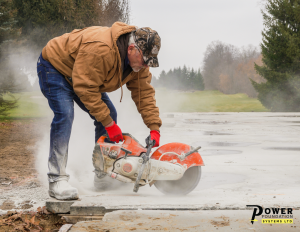
This traditional concrete method is still widely used today and backed by research, we’re going to dive deeper into its advantages and disadvantages versus the modern helical piles.
Strength
Helical screw piles are generally made with high-quality galvanized steel, along with galvanized coating for a long lifespan. When it comes to strength, a single helical pile can hold up to 500 tons, but can go way higher to 1,000,000 tons when the number of piles increases (Helical Pier Distributions, n.d.). It’s important to note though that each customized helical pier has different load-bearing capacities based on several factors, including plate diameter, soil condition, overlapping stress zone, and more.
Traditional concrete foundation, typically a 6-inch cured concrete slab of 4,000 psi can handle concentrated loads of up to 3,000 pounds (1.5 ton) in one sq. ft. area (Scott, 2024). This is remarkably less than what a single helical pier can hold.
Installation Speed
The typical concrete foundation dries from 24 to 48 hours, which is dry enough for lightweight human traffic. However, it’s important to note that drying concrete is a continuous process and can take up to 28 days to achieve its peak durability before it can support heavy loads. (Formingamerdev, 2024)
Helical piles, on the other hand, can be installed in just a day or two for small to medium-sized construction projects. Once the plan has been laid out by engineers and foundation experts, only non-specialized equipment is needed to install helical piles.
Power Foundations, a helical pile company in London, Ontario installs them by rotating the pile’s shaft, applying and transferring torque down the shaft to the helix plates. The helix bites into the ground, much like a corkscrew. The entire screw pile installation is monitored using the torque in real-time to ensure optimal soil condition for each pile.
Moreover, you don’t need to wait for curing as helical piles reach their full load-bearing capacity upon installation. You can directly proceed with the next step of the construction process, saving you time and money in the long run.
Site Disruption
The first thing to prepare before a concrete foundation pour is determining the amount of excavation and soil removal needed, ranging from 10 to 12 feet deep or higher. The calculation for the excavation varies for each project, and costs also differ depending on the equipment required and the condition of the soil (Hills & Hills, 2020). Regardless of whether your construction project is big or small, excavation takes time and results in a significant site disturbance.
If you’re not open to this kind of disruption on your property, then helical screw piles are the right concrete footing alternative for you. Helical pile installation offers minimal site disturbance during construction.
For instance, without excavation, hammering, or vibration, Power Foundations in London, Ontario installs helical piles by screwing them to the ground with helical blades using an excavator’s torque motor. Once in place, these screw piles don’t move or get displaced, ensuring you have a strong and reliable foundation for your new build.
Geological and weather conditions
One of the benefits of helical piles vs concrete footings is the adaptability to varying weather and soil conditions. For instance, unlike concrete which can crack with water, moisture, and extreme heat over time, helical piles can withstand heavy frost and thawing due to its major components being steel. (SEBwebsite, 2024)
Also, when it comes to installing helical piles, you can do it year-round, even during winter. Since they don’t require excavation and curing time, they’re most ideal for any weather and soil conditions, saving you from any inconvenience and costly delays.
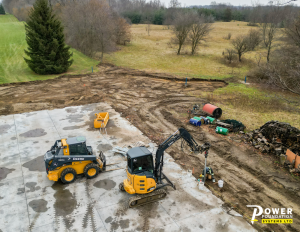
Lifespan
Both concrete and helical pile foundations provide long lasting support for structures.
According to the International Association of Certified Home Inspectors (InterNACHI), assuming they were properly built, a concrete foundation can last more than 100 years. So if you’re in a modern house, you probably don’t need to worry about your foundation in a while. However, this highly depends on how your property is exposed to the elements, as well as the soil condition.
Same with helical piles, they’re estimated to last up to 150 years, although the range is so wide that it can be up to 350 years. The biggest factor to consider is the soil condition and movement, and how compact it is over time. Check in with your reliable helical pile designer to get a peek of the lifespan of your foundation based on the local climate and the condition of your terrain.
The only thing that would differ between both will be the maintenance.
Maintenance
Although helical screw piles might need minimal repair in the long run, both foundation methods still require proactive regular inspections and maintenance. Visual inspection is one of the most fundamental aspects, including checking for corrosion, surface damage, or foundation settling. These assessments can help property owners take immediate action before anything escalates to serious amounts of damage.
Aside from regular inspection, to ensure the longevity of your foundation, you need to ensure the following especially if you have concrete as it is more prone to cracking and shifting sometimes as early as one year upon installation:
- Good drainage system. When water pools around your home, it puts lots of pressure on your foundation, resulting in cracks or structural damage.
- Install a root barrier. If you have large trees in your backyard or near your property, be mindful of root penetration. Roots can grow up to three times the radius of the canopy, and five times longer in drier climates. (Angelo, 2022)
- Inspect gutters and downspouts. Make sure they direct water away from your home, otherwise, they will make your soil damp and wet, damaging your foundation.
- Maintain consistent moisture and temperature levels to avoid cracks.
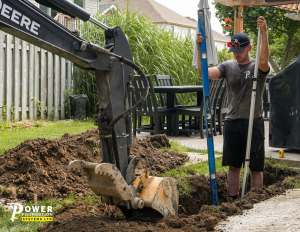
As for helical pile maintenance, they’re known for their durability and stability. Regular inspections need to be heavy on checking the helical plates and shafts, assessing load-bearing capacity, and evaluating the condition of the screw piles underground.
Whichever foundation method you choose, they have to be well-installed and maintained to avoid any costly repair in the long run.
If you think you have a problem with your foundation, there are a number of effective foundation repair solutions for your home available that can incredibly strengthen your structure.
Cost
If it’s about the cost of raw materials, concrete is generally lower than helical piles. The hard materials on concrete typically range from a few hundred dollars to thousands, depending on how big your new build is. The key difference here is that you pay for labor and excavation work as the process requires significant mixing, digging, pouring, and curing.
The issue at stake here is that if any error occurs while pouring concrete for your foundation, or if a contractor hit a plumbing line while excavating, it can be incredibly difficult and costly to repair and make any changes. In contrast, with a helical pile, you can just install and remove it whenever needed, leaving only a narrow hole on the ground.
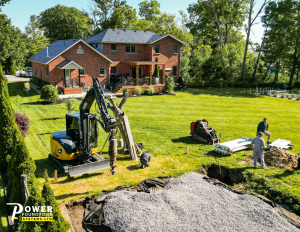
It’s true that helical piles cost more, but the savings in installation, labor, and excavation work from using them more than offset the extra investment allocated for this modern technology. They’re made to surpass industry standards in terms of stability, durability, and longevity. Not to mention the cost of maintaining helical piles is less expensive than concrete as the latter generally requires more repairs and maintenance even after just a few years.
Additionally, according to James Moylan of Design Builders Inc., “installing helical piers is at least 20 percent more productive than digging, and many homeowners find piers end up being the same price or cheaper for a stronger, more reliable system.”
To get a free estimate on helical piles cost for your project, click here.
To sum it up
Although the right foundation method would highly depend on several factors, it’s essential to understand what each of them can offer. There are instances when people decide to combine concrete and helical piles for optimal results. But in the end, there’s no universal answer to the question of which one is better between helical piles vs concrete foundations.
However, when it comes to the advantages and benefits, helical piles are the most cost effective solution, saving you from the hassle and cost of excavation, labor, construction delays due to curing, and bad weather conditions. With immense durability, load-bearing capacity, and adaptability to different soil bases, your projects can last a lifetime with minimal maintenance and repairs compared to having concrete.
Using helical piles is also a win-win situation for both the contractor and the client, as they pave the way for projects to finish faster with increased productivity.
In most cases, helical piles offer the best solutions for your foundation needs.
Searching for ‘helical piles near me’ shouldn’t take that long. If you’re interested in using helical piles for your project, feel free to contact Power Foundation Systems based in London, Ontario.
Power Foundation Systems is highly experienced in helical pile engineering, underpinning, foundation repairs, and more. Its roster of reliable foundation experts can help you assess your options for a wide range of projects and come up with the best solution for you.

